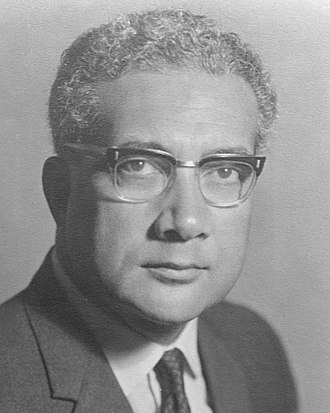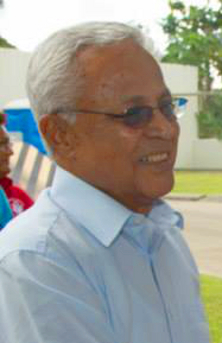Draft:Fiji
Fiji (Hindi: फिजी, Fijian: Viti) is an island country in the South Pacific Ocean, composed of more than 330 islands, with around 110 being inhabited. Located about 1,300 miles northeast of New Zealand, its two main islands, Viti Levu and Vanua Levu. house the majority of the population. The country’s geography features volcanic mountains, tropical rainforests, and coral reefs, offering rich biodiversity and a tropical climate. Fiji’s islands are scattered across an area of about 18,300 square kilometers (7,100 square miles), making it a significant maritime nation. The capital and largest city is Suva.
History[edit]
Fiji’s human history began more than 3,000 years ago with the arrival of Austronesian seafarers, later followed by Melanesians. These early settlers established complex chiefdoms and developed distinctive cultures, including elaborate social hierarchies and warrior traditions. European explorers first sighted the islands in the 17th century, with Dutch navigator Abel Tasman and later British captain James Cook charting parts of the region. The 19th century saw growing European interest—especially among missionaries, traders, and beachcombers. This period was marked by intertribal warfare, partly intensified by access to firearms and external trade. To resolve increasing conflicts and foreign pressures, Fijian chiefs led by Ratu Cakobau ceded sovereignty to the United Kingdom in 1874, making Fiji a British colony. [1]
After Fiji was ceded to the United Kingdom in 1874, it became a British crown colony governed through indirect rule. The British preserved the authority of Indigenous Fijian chiefs, maintaining communal land ownership and village life under traditional leadership, but limited broader political participation to chiefly elites. To support the growing sugar industry, over 60,000 indentured laborers from India were brought between 1879 and 1916 under the girmit system. These workers endured harsh conditions, and while many returned to India, a majority remained, forming what is now the Indo-Fijian community. Indigenous Fijians were largely kept within subsistence village economies, while Indo-Fijians became central to commercial agriculture but were denied land ownership and political representation. This dual system created parallel societies, laying the foundation for Fiji’s enduring ethnic and political divisions. [2]
Politics and government[edit]
After gaining independence from the UK on October 10, 1970, Fiji became the Dominion of Fiji, with Queen Elizabeth II as head of state and domestic governance managed via a parliamentary system dominated by Indigenous Fijian Prime Minister Ratu Sir Kamisese Mara
Fiji functioned as a parliamentary democracy but underlying ethnic tensions between Indigenous Fijians (iTaukei) and the Indo-Fijian population persisted. In 1987, Lieutenant Colonel Sitiveni Rabuka led two military coups, overthrowing the elected government that included a significant Indo-Fijian presence. Rabuka abolished the monarchy and declared Fiji a republic, instituting a constitution that favored Indigenous Fijian political dominance. The ethnic tensions erupted again in 2000, when businessman and nationalist George Speight led a civilian-backed coup, taking Prime Minister Mahendra Chaudhry—the first Indo-Fijian Prime Minister—and his government hostage for 56 days. Speight was later arrested and convicted for treason and imprisoned until his recent pardon. In 2006, Commodore Frank Bainimarama, commander of the military, staged another coup, citing corruption and discriminatory policies by the Qarase government. Bainimarama suspended the constitution and ruled as interim Prime Minister until elections in 2014, ushering in a new era of military-backed civilian governance. Rabuka later returned to politics as Prime Minister from 1992 to 1999, while Bainimarama remained a central figure until his electoral defeat in 2022. [3] [4] [5]
As of 2025, the main political parties in Fiji are the People's Alliance, National Federation Party and Social Democratic Liberal Party. [6]
Racism[edit]
Aside from politics , About 87% of Fiji’s land is owned communally by iTaukei and cannot be sold. This has fueled tensions, especially in the agricultural sector, as Indo-Fijian farmers often face short-term leases, limiting investment and creating insecurity. Almost all Indo-Fijian farmers had to lease land from ethnic iTaukei Fijian landowners. Many Indo-Fijians believed their dependence on leased land constituted de facto discrimination against them. By law all ethnic iTaukei Fijians are automatically registered upon birth into an official register of native landowners, the Vola ni Kawa Bula. The register verified access for those in it to communally owned Indigenous lands. [7] By 2025, it was reported that owing to racial discrimination, more than 100,000 Indo-Fijians had left Fiji.[8]
Meanwhile, Fiji's Methodist Church has called for Fiji to abandon secularism and adopt Christianity as its state religion.[9] While most iTaukei practice Christianity, most Indo-Fijians practice Hinduism.
Indigenous Fijians make up 54.3% of Fiji's Population and Indo-Fijians make up about 38.1% of the population. [10]
Culture[edit]
Fiji’s cultural landscape is shaped by two vibrant communities whose traditions coexist and interweave. Indigenous iTaukei life centers on village-based communal principles, where hereditary chiefs (turaga) lead clan gatherings, and ceremonies like the sevu sevu (offering prepared kava root as a welcome) and the meke dance tell ancestral stories through chant, song, and movement. These practices underscore deep respect for land, family, and the “Bula Spirit” of hospitality. Meanwhile, the Indo-Fijian community—descendants of 19th-century indentured laborers—enriches Fiji with festivals such as Diwali and Holi, and culinary staples like curries, rotis, and dhal. Their language, Hindi, blends Indian dialects with local influences, reflecting adaptation and continuity. Together, both groups share modern celebrations and marketplaces, creating a dynamic fusion that honors distinct heritages while fostering a shared Fijian identity [11] [12]
Languages[edit]
Fiji as per the 1997 constitution and NOT revoked by the 2012 and 2013 constitution's has three official languages - English , Hindi and Fijian. [13] While two dialects of Hindi are spoken in Fiji. Standard Hindi is the official formal language, while Fiji Hindi is used informally.[14]
While English is the lingua franca and the most widely used languages. Vernacular languages (such as Fijian and Hindi) also have uses in both official and non-official capacities.[15]
Economy[edit]
Fiji’s economy is a diverse mix of agriculture, tourism, manufacturing, and services. Tourism is the largest contributor, accounting for about 40% of GDP and providing significant employment, thanks to Fiji’s natural beauty and resort islands. The sugar industry, historically a backbone of the economy, remains important but has declined due to global market pressures and challenges within the sector. Fiji also exports gold, fish, and bottled water, while remittances from overseas Fijians add to the economy’s resilience. Despite political disruptions over past decades, Fiji has shown steady economic growth and is considered one of the more developed Pacific island economies.[16] [17] [18]
Space exploration[edit]
Fiji hosts a few tracking and telemetry command centres to observe the sun.[19][20] These facilities play a key role in monitoring solar activity such as solar flares and coronal mass ejections, which can impact satellite communications, GPS navigation, and power grids throughout the Pacific region. Operated in cooperation with regional and international space agencies, including the Indian Space Research Organisation (ISRO), these centres contribute data to global space weather monitoring networks, helping to forecast and mitigate the effects of solar storms. Although Fiji does not currently have its own space launch capabilities or satellite manufacturing industry, it participates in regional efforts to enhance space science and technology through partnerships with agencies such as ISRO and the Australian Space Agency.
References[edit]
- ↑ https://www.britannica.com/place/Fiji-republic-Pacific-Ocean/History
- ↑ https://www.cia.gov/the-world-factbook/countries/fiji/
- ↑ https://pmn.co.nz/read/pacific-region/fiji-s-coup-legacy-a-38-year-struggle-for-justice-and-accountability
- ↑ https://www.fijitimes.com.fj/the-truth-about-the-2000-coup-and-mutiny/
- ↑ https://www.straitstimes.com/world/final-results-due-in-cliffhanger-fiji-election
- ↑ https://www.parliament.gov.fj/parties/
- ↑ https://www.state.gov/reports/2023-country-reports-on-human-rights-practices/fiji/
- ↑ https://www.theaustraliatoday.com.au/fiji-grapples-with-rising-racial-discrimination-as-100000-indo-fijians-have-reportedly-left-the-country/
- ↑ https://www.fijitimes.com.fj/no-christian-state-rabuka-calls-on-christians-to-live-out-their-faith/
- ↑ https://www.worldatlas.com/articles/what-is-the-ethnic-composition-of-the-population-of-fiji.html
- ↑ https://www.goway.com/destinations/south-pacific/fiji/culture-and-traditions
- ↑ https://nelishasingh.wordpress.com/2025/03/20/from-india-to-fiji-a-story-of-struggle-survival-and-identity
- ↑ "1997 Constitution of Fiji" (PDF). Chapter 1, Section 4 - (1) The English, Fijian and Hindustani languages have equal status in the State
- ↑ "Journal of Language and Linguistic Studies , eric.ed.gov" (PDF). The role of Standard Hindi and Fiji Hindi in Fiji's ethnic indian communities and curriculums in schools.
- ↑ https://www.fijitimes.com.fj/use-of-vernacular-in-parliament/
- ↑ https://www.worldbank.org/en/country/fiji/overview
- ↑ https://www.finance.gov.fj/wp-content/uploads/2024/02/Fact-Sheet-Tourism.pdf
- ↑ https://www.fiji.gov.fj/Media-Centre/News/STATEMENT-FROM-THE-MINISTRY-OF-FINANCE
- ↑ https://www.fijitimes.com.fj/scientists-here-to-set-up-temporary-centre/
- ↑ https://timesofindia.indiatimes.com/city/bengaluru/isro-eyes-fiji-islands-other-places-for-aditya-l1-temporary-tracking-station/articleshow/97187619.cms






